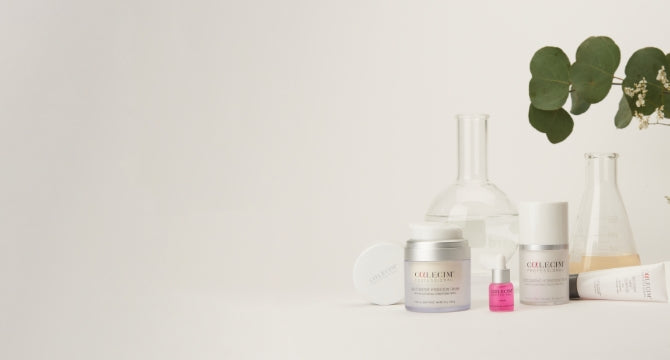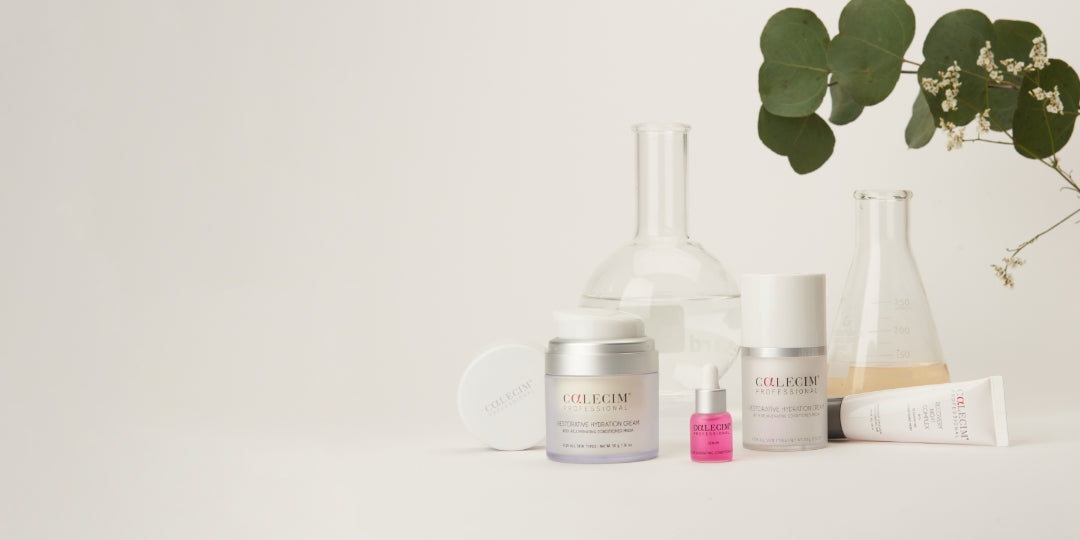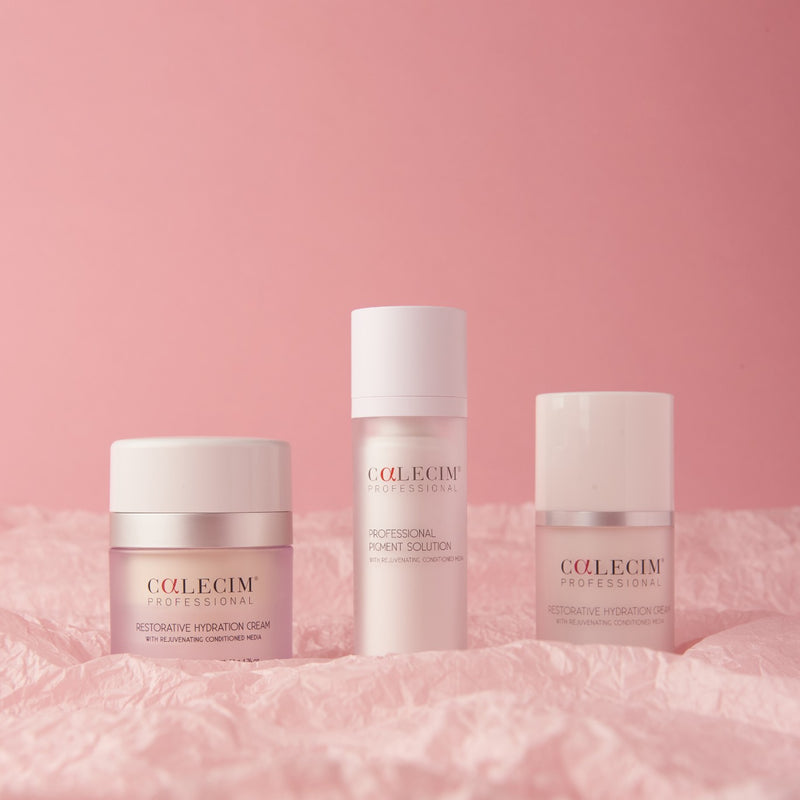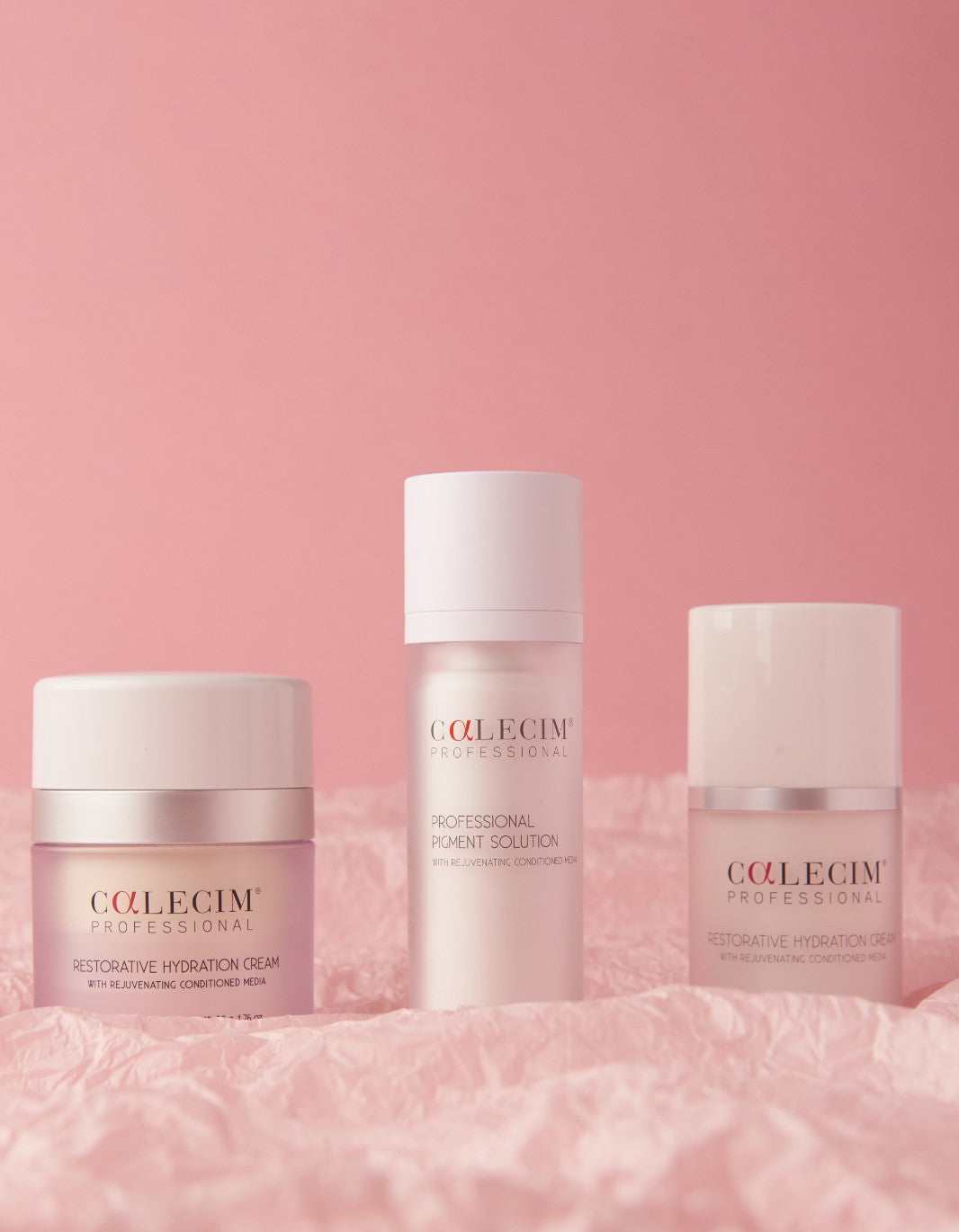Red Deer Umbilical Cord Lining Mesenchymal Stem Cell-Conditioned Media Stimulates Fibroblast Elastin and Hyaluronic Acid Production to Improve Eyelid Aesthetics
As seen in

Background
Conditioned media (CM) from red deer umbilical cord lining mesenchymal stem cells (RD-CLMSC) contains exosomal suspensions. It is the active ingredient in a facial cream (CALECIM Professional Multi-Action Cream) shown to improve skin tone after topical use. This is related to increased human dermal fibroblast (HDF) proliferation and increased HDF production of elastin and hyaluronic acid (HA). This study investigates if RD-CLMSC-CM might increase elastin and HA to improve thin eyelid skin turgor and elasticity.
Methods
Upper eyelid skin HDF from 9 individuals were exposed in culture to RD-CLMSC-CM. Photocolorimetry after histochemical staining demonstrated increased expression of elastin by 68% and HA by 113% compared with exposure to Dulbecco's modified eagle medium/10% fetal calf serum. A topical eyelid skin formulation containing RD-CLMSC-CM was applied to the upper and lower eyelid skin of 4 preexisting users of RD-CLMSC-CM facial cream. Photographic comparison before and after application demonstrated subjective and objective cosmetic improvement.
Results:
Topical application of RD-CLMSC-CM increased eyelid HDF production of elastin and HA. This improved skin elasticity and turgor to heighten eyelid skin aesthetics.
Materials and Methods:
- Red Deer Umbilical Cords: Cords were collected from a New Zealand farm following specific handling.
- Isolation of Stem Cells: RD-CLMSCs were isolated from umbilical cords using a published protocol (WO 2006/019,357 A1).
- Eyelid Skin–Derived Fibroblasts: Human dermal fibroblasts were isolated from eyelid skin of donors with varying profiles.
- Conditioned Media: RD-CLMSCs were cultured, and the conditioned media (CM) was collected.
- Hyaluronic Acid and Elastin Staining: Eyelid skin-derived HDFs were seeded into 96-well plates and cultured in either DMEM/10% FCS (control) or RD-CLMSC-CM for 48 hours, then stained for HA and elastin.
 Figure 1. Representative immunocytochemical images showing HA and elastin expression in HDFs cultured for 48 hours in either DMEM/10% FCS (control) or RD-CLMSC-CM. Human dermal fibroblasts (n 5 9), derived from eyelid skin of donors aged 23 to 69 years, were stained for elastin and HA. Quantification of optical density using ImageJ revealed that RD-CLMSC-CM treatment increased HA and elastin expression by 113% and 68%, respectively, compared to DMEM/10% FCS (control). DMEM, Dulbecco’s modified eagle medium; FCS, fetal calf serum; HA, hyaluronic acid; HDF, human dermal fibroblast; RD-CLMSC-CM, red deer umbilical cord lining mesenchymal stem cell–conditioned media.
Figure 1. Representative immunocytochemical images showing HA and elastin expression in HDFs cultured for 48 hours in either DMEM/10% FCS (control) or RD-CLMSC-CM. Human dermal fibroblasts (n 5 9), derived from eyelid skin of donors aged 23 to 69 years, were stained for elastin and HA. Quantification of optical density using ImageJ revealed that RD-CLMSC-CM treatment increased HA and elastin expression by 113% and 68%, respectively, compared to DMEM/10% FCS (control). DMEM, Dulbecco’s modified eagle medium; FCS, fetal calf serum; HA, hyaluronic acid; HDF, human dermal fibroblast; RD-CLMSC-CM, red deer umbilical cord lining mesenchymal stem cell–conditioned media.
Clinical Improvement in Eyelid Skin Reduction of Fine Lines and Wrinkles
Four preexisting users of CALECIM Professional skin care products volunteered to use the eye cream (CALECIM Professional Eye Contour Lifting Cream) twice daily for 5 weeks with photographs taken at baseline and after the trial period for clinical assessment using a global aesthetic improvement scale (GAIS) for both the clinician and the patient.
Evaluated variables included rhytids, skin texture, laxity, dyschromia, and the appearance of the eyebags. Subjects rated their improvement with a self-assessment questionnaire. Clinician GAIS was based on a 5-point scale (1-much improved, 2-improved, 3-no change, 4-worse, 5-much worse).
Results
- RD-CLMSC-CM increased HA expression by 113% and elastin expression by 68% in cultured HDFs.
- Clinical improvements were noted in laxity and eye bag appearance in all 4 volunteers.
- Approximately 75% reported improvements in rhytids, texture/fine lines, and dyschromia.
- Investigator assessment showed improvements in texture/fine lines, laxity, and eye bag appearance in all volunteers, with 75% improvement in rhytids and 50% improvement in dyschromia.
 Figure 2. Subject 2: Before (left) and after (right) 5 weeks of applying RD-CLMSC-CM eye cream. RD-CLMSC-CM, red deer umbilical cord lining mesenchymal stem cell–conditioned media.
Figure 2. Subject 2: Before (left) and after (right) 5 weeks of applying RD-CLMSC-CM eye cream. RD-CLMSC-CM, red deer umbilical cord lining mesenchymal stem cell–conditioned media.
 Figure 3. Subject 2: before (left) and after (right) 5 weeks of applying RD-CLMSC-CM eye cream. RD-CLMSC-CM, red deer umbilical cord lining mesenchymal stem cell–conditioned media.
Figure 3. Subject 2: before (left) and after (right) 5 weeks of applying RD-CLMSC-CM eye cream. RD-CLMSC-CM, red deer umbilical cord lining mesenchymal stem cell–conditioned media.
 Figure 4. Subject 3: before (left) and after (right) 5 weeks of applying RD-CLMSC-CM eye cream. RD-CLMSC-CM, red deer umbilical cord lining mesenchymal stem cell–conditioned media.
Figure 4. Subject 3: before (left) and after (right) 5 weeks of applying RD-CLMSC-CM eye cream. RD-CLMSC-CM, red deer umbilical cord lining mesenchymal stem cell–conditioned media.
Discussion
Eyelid skin aging results from intrinsic and extrinsic factors. The study results suggest RD-CLMSC-CM enhances ECM protein expression in eyelid-derived HDFs, which supports its potential as a cosmetic ingredient for improving skin hydration and elasticity, regardless of donor age.
Conclusion
Red deer umbilical cord lining mesenchymal stem cell-conditioned media has now been shown to have rejuvenating effects on facial skin and the eyelids. This perceived clinical improvement in the eyelids is correlated to increased production of elastin and hyaluronic acid by eyelid HDFs. Further mechanisms at work may involve the exosomal creation of environments supportive of native stem cell populations in the skin.
Note: This abstract provides a summarized view of the study's key points. For detailed information, refer to the original article.

























